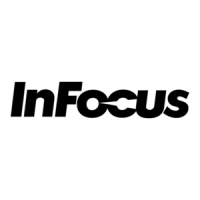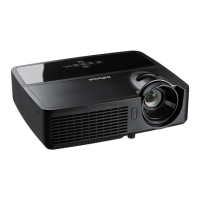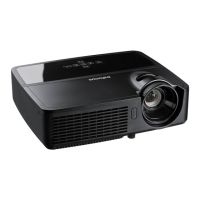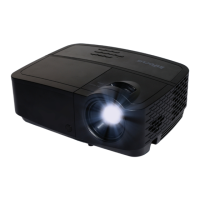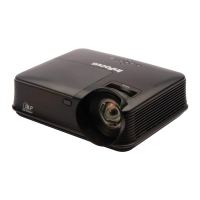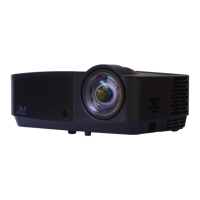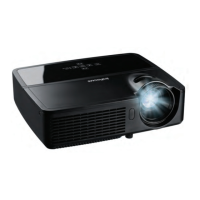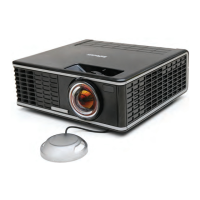| Matrix size | 0.65 \ |
|---|
| Number of colors | 1.073 billion colors |
|---|
| Native aspect ratio | 16:10 |
|---|
| Projection distance | 1.41 - 9.66 m |
|---|
| Projection technology | DLP |
|---|
| Supported aspect ratios | 4:3, 5:4, 16:9, 16:10 |
|---|
| Contrast ratio (typical) | 4000:1 |
|---|
| Screen size compatibility | 45 - 303 \ |
|---|
| Projector native resolution | WXGA (1280x800) |
|---|
| Keystone correction, vertical | ± 40 ° |
|---|
| Vertical synchronization (max) | 120 kHz |
|---|
| Vertical synchronization (min) | 50 kHz |
|---|
| Horizontal synchronization (max) | 100 kHz |
|---|
| Horizontal synchronization (min) | 31 kHz |
|---|
| Focus | Manual |
|---|
| Offset | 13 % |
|---|
| Throw ratio | 1.47 - 1.83:1 |
|---|
| Zoom capability | Yes |
|---|
| Focal length range | - mm |
|---|
| Lamp type | UHP |
|---|
| Lamp power | 230 W |
|---|
| Light source type | Lamp |
|---|
| Service life of light source | 3500 h |
|---|
| Service life of light source (economic mode) | 5000 h |
|---|
| DVI port | No |
|---|
| HDMI version | 1.4 |
|---|
| USB connector type | Mini-USB B |
|---|
| Serial interface type | RS-232 |
|---|
| USB 2.0 ports quantity | USB 2.0 ports have a data transmission speed of 480 Mbps, and are backwards compatible with USB 1.1 ports. You can connect all kinds of peripheral devices to them. |
|---|
| S-Video inputs quantity | 1 |
|---|
| VGA (D-Sub) ports quantity | 3 |
|---|
| Component video (YPbPr/YCbCr) in | 0 |
|---|
| Supported video modes | 1080i, 1080p, 480i, 480p, 576i, 576p, 720p |
|---|
| Analog signal format system | NTSC, PAL, SECAM |
|---|
| Supported graphics resolutions | 1920 x 1200 (WUXGA) |
|---|
| RMS rated power | 2 W |
|---|
| Placement | Desktop, Ceiling |
|---|
| Product type | Standard throw projector |
|---|
| Product color | Black |
|---|
| Cable lock slot type | Kensington |
|---|
| Power source | AC |
|---|
| AC input voltage | 100 - 240 V |
|---|
| AC input frequency | 50 - 60 Hz |
|---|
| Power consumption (max) | 260 W |
|---|
| Power consumption (standby) | - W |
|---|
| Power consumption (typical) | 235 W |
|---|
| HDCP | - |
|---|
| Noise level | 30 dB |
|---|
| Preset modes | Beige wall, Blackboard, Bright, Cinema, Custom, Presentation, Whiteboard |
|---|
| Certification | UL, c-UL, FCC, CE |
|---|
| Password protection type | User |
|---|
| Noise level (economic mode) | 28 dB |
|---|
| On Screen Display (OSD) languages | CHI (SIMPL), CHI (TR), DAN, DEU, DUT, ENG, ESP, FIN, FRE, ITA, KOR, NOR, POL, POR, RUS, SWE, TUR |
|---|
| Operating altitude | 0 - 3048 m |
|---|
| Operating temperature (T-T) | 5 - 35 °C |
|---|
| Cables included | AC, VGA |
|---|
